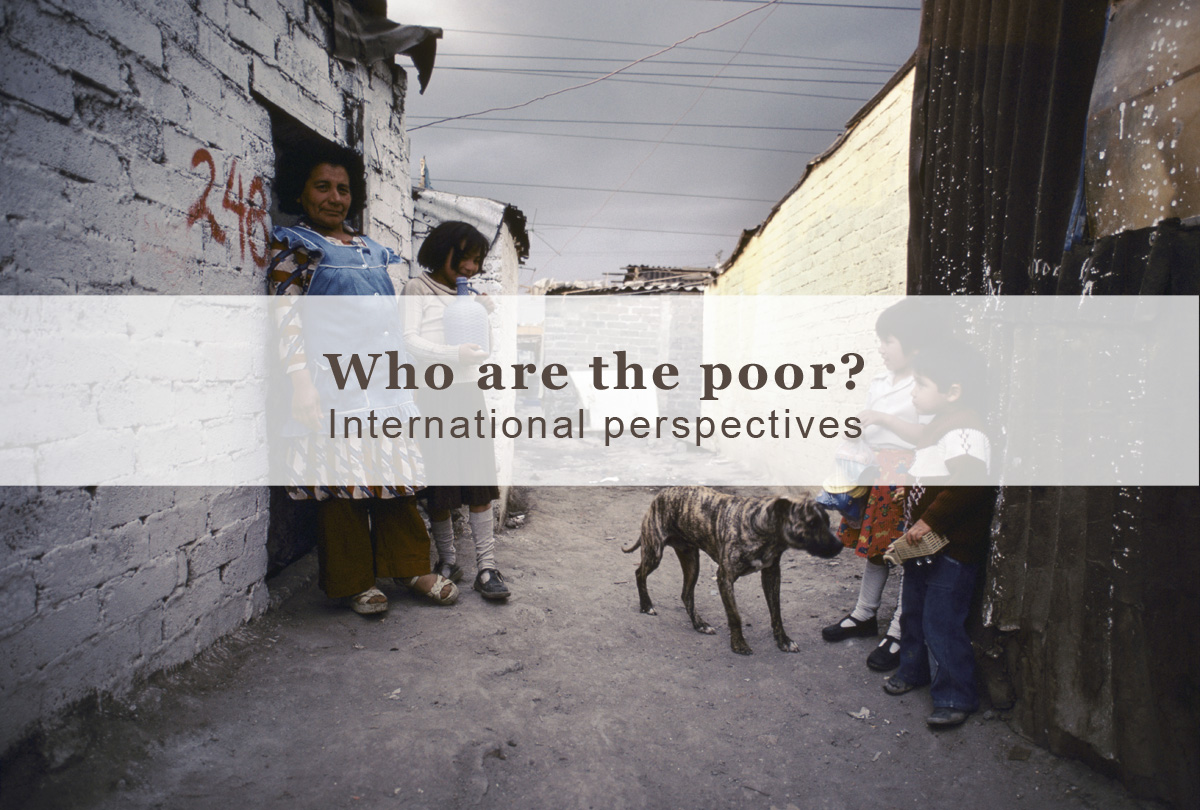Definitions of poverty really matter. They set the standards by which we determine whether the incomes and living conditions of the poorest in society are acceptable or not and are essential for determining questions of fairness. From these definitions follow all actions to help the poorest.
This section sets out different ways to define and measure poverty and outlines recent key developments. The PSE: UK research project uses the ‘consensual method’, which defines poverty as those whose lack of resources forces them to live below a publicly agreed minimum standard. Under World you will find details of how the consensual approach is being used across the globe and, in particular, for meeting the UN's Sustainable Development Goals for multi-dimensional poverty.
There is much controversy about how to define poverty. In 'How poor is too poor?' (below) you will find a short introduction into the different approaches and how they have developed. In the UK these definitions were being hotly debated as first the Coalition government (2010 to 2015) and then the Conservative government sought to change the criteria currently used to monitor and measure child poverty set out in the Child Poverty Act, resulting in repealing the Act in 2016 (see Official UK and EU measures).
In the film below you can hear how a range of leading international speakers at the Second Peter Townsend Memorial Conference define poverty.
How poor is too poor?
by Joanna Mack
How do we decide what a person needs to participate in the society in which they live in the 21st century? What is the minimum standard of living to which everyone should be entitled?
In the past, there has been much debate on absolute and overall poverty but in recent years it has been widely accepted that poverty is relative to the place and time you live in. Most official definitions of poverty use relative income to measure who is in poverty; an income threshold is set and those who fall below it are seen to be ‘in poverty’. The key UK government measures take 60 per cent of median income as the poverty line. But while this is easy to measure and does provide useful comparisons over time, it is essentially an arbitrary definition and has been much criticised, most recently in the UK in the Field Review.
The alternative approach to defining poverty is to look at direct measures of deprivation rather than using income as a proxy for poverty. Looking at deprivation allows a wide range of aspects of living standards to be included. Peter Townsend, in his pioneering Poverty in the United Kingdom, argued that deprivation should not be seen only in terms of material deprivation but also in the social exclusion from ‘the ordinary patterns, customs and activities’ of society.
The ‘consensual’, or ‘perceived deprivation’, method develops the Townsend ‘deprivation’ approach in two key respects. Firstly, it uses public opinion to set minimum standards and, secondly, it allows for choice in lifestyles. In summary, this consensual approach sets out to determine the minimum acceptable living standards for the society being examined and who falls below them because of a lack of resources rather than through a lifestyle choice. A poverty threshold is then identified by relating to income those who lack necessities because they can’t afford them (rather than from choice) and so defines poverty in terms of both multiple deprivation and income. It is a relative measure of poverty, though none the less distressing for those experiencing such hardships. This approach was pioneered in the 1983 Breadline Britain survey (see Poor Britain) and has since been developed and refined, in particular through the Poverty and Social Exclusion (PSE) survey in 1999 and in the latest 2012 PSE survey.
The 1999 PSE survey also developed the understanding of social exclusion by more fully and systematically covering social relations, the labour market and service exclusion. The ‘consensual’ method, with this wider understanding of social exclusion, forms the basis of the current Poverty and Social Exclusion research, PSE: UK.
The PSE approach, while providing a detailed understanding of levels of deprivation and how these relate to income, does not provide a direct measure of the minimum income needed to escape poverty. The ‘minimum budget standards’ approach tackles this question by identifying a basket of essential goods and costing those goods so as to set a minimum budget necessary to live without poverty.
In recent years, other approaches to defining and measuring poverty have also been developed, including ones based on the concepts of ‘capabilities’, ‘rights’ and more subjective concepts such as ‘well-being’ (see Other approaches).
Joanna Mack (The Open University) was a member of the PSE: UK research team and principal investigator for Breadline Britain 1983 and Breadline Britain 1990. She is a research fellow at Bristol University and The Open University.
Further reading
The Policy Press has further books and publications on this topic.
Lansley, S. and Mack, J. (2015) Breadline Britain - the rise of mass poverty, London, Oneworld
References
Mack, J. and Lansley, S. (1985) Poor Britain, London, George Allen & Unwin.
Townsend, P. (1979) Poverty in the United Kingdom, London, Allen Lane and Penguin Books.
Last updated: 21 January, 2016







 PSE:UK is a major collaboration between the University of Bristol, Heriot-Watt University, The Open University, Queen's University Belfast, University of Glasgow and the University of York working with the National Centre for Social Research and the Northern Ireland Statistics and Research Agency. ESRC Grant RES-060-25-0052.
PSE:UK is a major collaboration between the University of Bristol, Heriot-Watt University, The Open University, Queen's University Belfast, University of Glasgow and the University of York working with the National Centre for Social Research and the Northern Ireland Statistics and Research Agency. ESRC Grant RES-060-25-0052.






